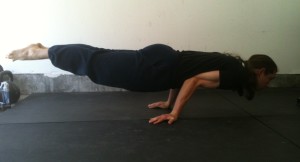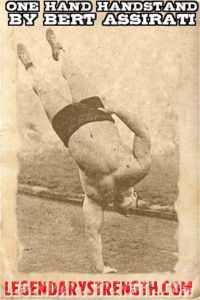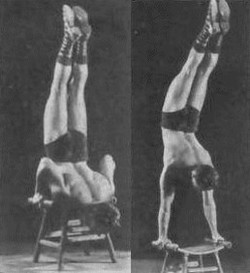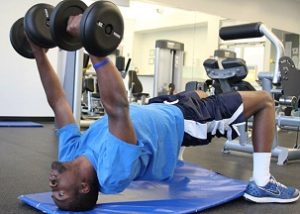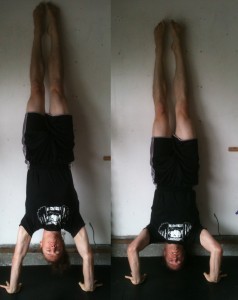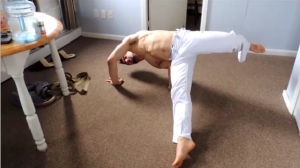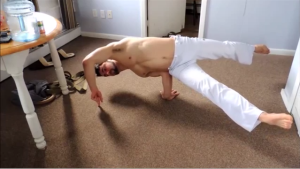There are a number of different possibilities that will lead up to your first handstand. In fact we recommend 5 different lead-up stunts or body skills that can help you achieve this feat.. Whether its the Frogstand, Headstand, their variations or even today’s topic; you’ll gain a valuable piece of information that will help you progress to your goal or even build up to other goals.
Honestly, these lead-up stunts aren’t necessary to get your first handstand, but they build a pathway that can make it easier. All of these body skills share common traits to the handstand and therefore pave the way towards good handbalancing.
The different skills each put you into an inverted position, develop strength, balance and the motor control necessary to perform a handstand.
So without talking the skills up too much and not delivering, lets give you more insight on the move at hand:
The Elbow Lever
Don’t let this move scare you. It is an advanced Hand balancing skill and I’m only starting off with it to give you a long term skill to shoot for. Also, if what I’ve been saying is true, you’ll be able to gain some valuable experience towards you hand balancing Journey.
To perform this lead- stunt kneel on the floor, bring both elbows together and place them in your stomach and turn the palms of the hands facing upwards. Now lean forwards slowly and place the hands flat on the floor with your fingers pointing backwards. Arch your back slowly until your toes leave the floor and you will be doing the elbow lever.
You will find the balance a little difficult at first but just keep on practicing. The stunt can also be performed on the edge of a table or on the end of any ordinary bed.
Now that you know how to do an elbow lever, we challenge you to go ahead and give it a try. Also if you want some pointers, try posting a video on our facebook page and we’ll be there to direct and support you development in your hand balancing journey.
Stay Inverted
-Jonathan Magno
BTW if you want to skip some of the process and guesswork toward building you hand balance skills, check out our handstand mastery course.

